Exploring the FBI Building: Architecture and Impact


Intro
The FBI Building, located in the heart of Washington, D.C., stands as a notable landmark. This structure is not just functional; it represents layers of history and cultural significance. Designed in the Modern Brutalist style, it features a facade characterized by raw concrete and linear forms. This architectural choice reflects a time in American design, conveying strength and durability.
The building has evolved from its original purpose since its completion in 1975. Initially, it served as the headquarters for the Federal Bureau of Investigation, housing key operations related to national security and crime prevention. Over the years, the landscape of law enforcement and civic duty has changed, yet the building remains a steadfast symbol of order and justice.
Visitors and passersby often notice its imposing presence. Beyond its physical form, the structure embodies narratives of American governance and law enforcement. This article unpacks the architectural elements, pivotal historical moments, and the overall impact of the FBI Building on American society.
Understanding this building goes beyond bricks and mortar; it invites a reflection on the role institutions play in the nation's psyche. The interplay between its design and function offers rich insights into how architecture can embody social values.
Preface to the FBI Building
The FBI Building stands as a landmark in Washington, D.C., representing more than just an architectural structure. It embodies the complex narrative of law enforcement in the United States. Understanding this building goes beyond its physical attributes, as it encapsulates the evolution of the Federal Bureau of Investigation and its pivotal role in national security. This introduction seeks to clarify the significance of the FBI Building and the various elements that will be explored in the article.
The FBI Building, also known as the J. Edgar Hoover Building, is not merely a workplace but a symbol of authority and governance. It offers insight into the intricate relationship between architecture and function, showcasing how design reflects operational needs.
Overview of the FBI's Role
The FBI serves a critical function in maintaining national security and enforcing federal laws. Established in 1908, it has evolved from a small investigative body into a comprehensive federal agency tackling serious crimes. The bureau handles a wide range of areas, including counter-terrorism, cybercrime, and organized crime. This broad scope highlights its influence over law enforcement and the judicial system.
The importance of the bureau is mirrored in its headquarters' design, which aims to cater to its busy operations while projecting an image of stability and control. The building’s architecture is strategically intended to symbolize the power and reach of federal enforcement. Understanding its role provides context to the significance of its architectural choices.
Location and Accessibility
Strategically situated at 601 4th Street NW, the FBI Building enjoys a prime location in the heart of Washington, D.C. Its proximity to other governmental institutions, including the U.S. Capitol and the White House, underscores its function within the web of national governance. This central placement facilitates both accessibility for employees and visibility for the public.
However, access to the building is not as straightforward as one might assume. As a high-security federal facility, the FBI Building is not open for casual visits. The limited accessibility reflects the sensitive nature of its operations. Public access to certain parts is restricted, creating a sense of exclusivity around its operations. While some outreach programs, including guided tours, are available, they provide a superficial glimpse into the larger workings of the FBI.
Architectural Design of the FBI Building
The architectural design of the FBI Building is a crucial aspect of its identity. It reflects not just the building's purpose but also the complexities of American history and governance. Understanding its design can reveal insights into the architectural trends of its time, the symbolism embedded within its structure, and the functional needs of a significant law enforcement agency. The FBI Building serves as a visual representation of the evolution of federal architecture, merging aesthetics with security functionalities. Analyzing this architectural design helps one to appreciate the confluence of form and function that characterizes this monumental site.
Design Influences and Style
The design of the FBI Building was influenced by the modernist architectural movement that swept across the United States during the mid-20th century. Its clean lines and geometric forms reflect a shift from ornate styles to practicality and simplicity. The building features the Brutalist style, characterized by its raw concrete exterior, which was seen as a statement of strength and stability. This choice was particularly resonant for a building housing a federal law enforcement agency.
Moreover, the design draws from a sense of transparency and authority. The large windows let in natural light but also present a paradox of visibility and security. This architectural approach illustrates the dual identity of the FBI as both a protector of society and a powerful presence in law enforcement.
Materials Used in Construction
The materials selection is equally vital to understanding the FBI Building's architectural significance. Concrete serves as the primary material, chosen for its durability and ability to withstand various threats. Its use denotes not just functionality but also a sturdy appearance to reinforce the agency's serious public image.
From a construction perspective, the thick walls provide security while also contributing to the building's distinctive Brutalist aesthetic. The choice of materials underlines the design ethos centered on strength and permanence. Glass is strategically incorporated to enhance light intake while maintaining a sense of seclusion, balancing openness and protection.
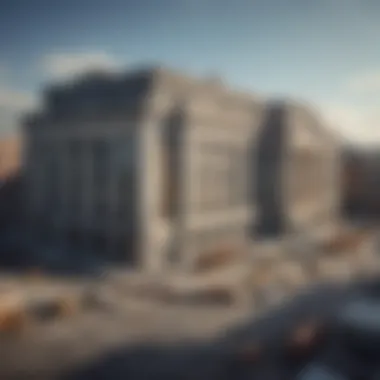
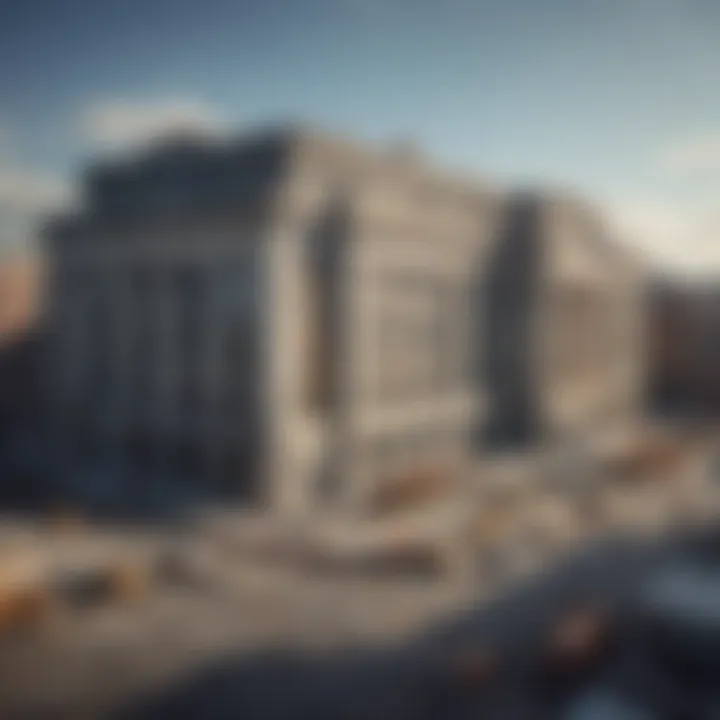
Interior Layout and Functionality
Internally, the layout of the FBI Building was designed for optimal functionality. The design incorporates a series of offices, meeting rooms, and specialized facilities aimed at meeting the needs of the agency's diverse operations. A clear, logical flow between spaces supports both individual tasks and collaborative efforts, essential for efficient law enforcement activities.
The interior is disciplined and functional, featuring wide corridors that promote movement and interaction among agents. Additionally, the arrangement of public areas reflects the importance of accessibility for visitors and the media, creating a welcoming yet secure environment. Such thoughtful design consideration affects how the FBI interacts with the public, providing insights into the agency's effort to maintain transparency while ensuring national security.
"The architectural approach of the FBI Building highlights the balance between a secure environment and the agency's mission of public service."
Overall, the architectural design elements of the FBI Building create a complex narrative that intertwines safety, function, and public perception. They serve not only as a functioning workspace but as an iconic symbol of the agency's role in American society.
Historical Context of the FBI Building
The historical context of the FBI Building is essential to understand its significance. This context sheds light on the evolution of law enforcement in the United States. It is rooted not just in architectural design, but also in the socio-political climate at different points in history. The FBI Building serves as a physical representation of changes in the nation’s security landscape. It has witnessed various events that have shaped both the Bureau and public perceptions surrounding it.
Establishment of the Building
The FBI Building was officially opened in 1975, a result of the growing need for a centralized headquarters for the Federal Bureau of Investigation. Prior to its construction, the FBI operated from several locations, which created challenges in coordination and efficiency. The decision to erect a single structure was influenced by the post-World War II expansion of the FBI’s roles and responsibilities. As the need for law enforcement increased due to rising crime rates and political unrest, it became critical for the Bureau to have a dedicated space that could accommodate its expanding operations.
The selection of the site on Pennsylvania Avenue between 9th and 10th Streets was strategic. It placed the FBI at the heart of the nation's capital, underscoring its importance. The building, designed by the architectural firm of Houstoun, played a significant role in establishing the identity of the FBI as a force for law enforcement.
Major Historical Events Linked to the Building
The FBI Building has been a witness to historical moments that impacted America and, by extension, the world. Many significant events have occurred within its walls. For example:
- Counterculture Movement: The building played a role during the protests of the 1960s and 1970s, where the FBI increased surveillance of various groups considered subversive.
- War on Terror: Post 9/11, the FBI underwent an extensive reorganization to address national security and counterterrorism efforts. The building became a focal point in these strategies.
- High-profile Investigations: Numerous famous cases, such as the investigation of organized crime and political corruption, were conducted from this building.
- Public Scrutiny: Throughout its history, the building has been involved in numerous controversies, leading to criticisms of the FBI's practices, such as surveillance and civil rights violations.
The interplay between the FBI’s operations and the social issues of each decade indicates how the building is more than just an office space. It embodies the complexities of American society and law enforcement throughout the years.
"The FBI Building stands as a monument to law enforcement's evolution in the United States, reflecting both formidable achievements and controversies."
Understanding the historical context of the FBI Building provides insight into its role in shaping modern law enforcement and its influence on public perception. This foundation sets the stage for deeper discussions about its architectural significance and cultural impact.
Significance of the FBI Building
The significance of the FBI Building extends beyond its physical structure. It serves as a representation of law enforcement's evolution in the United States, reflecting both cultural values and political ideologies. The building itself is not just an office; it is a symbol of authority, trust, and, at times, controversy. Its design and functionality encapsulate the complexities of an institution tasked with ensuring national security and upholding the rule of law.
Cultural and Political Significance
The FBI Building holds substantial cultural and political significance in American society. As the headquarters of the Federal Bureau of Investigation, it is often the focal point in discussions surrounding crime prevention, civil rights, and government accountability. The building’s imposing design signifies strength and stability, traits expected from national law enforcement agencies.
Moreover, its location in Washington, D.C. positions it at the heart of American political life. This proximity to power shapes public perception of the FBI. Discussions about the FBI’s role in larger societal issues come to life within the walls of this structure. Thus, it embodies the ongoing dialogue about justice, ethics, and human rights.
In addition, the building is a historical monument. It has seen notable events in U.S. history and has been a backdrop to critical moments in law enforcement and civil rights movements. These aspects make it more than just an office building; it represents the intersection of law enforcement and public sentiment, illustrating how law enforcement policies can be both a tool for safety and a source of public unease.
Impact on Law Enforcement Image
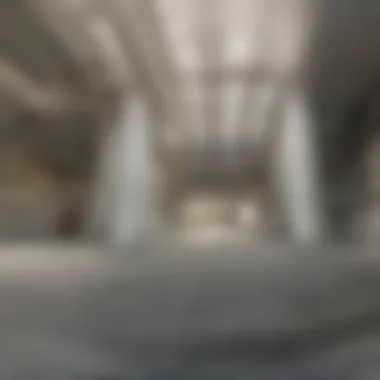
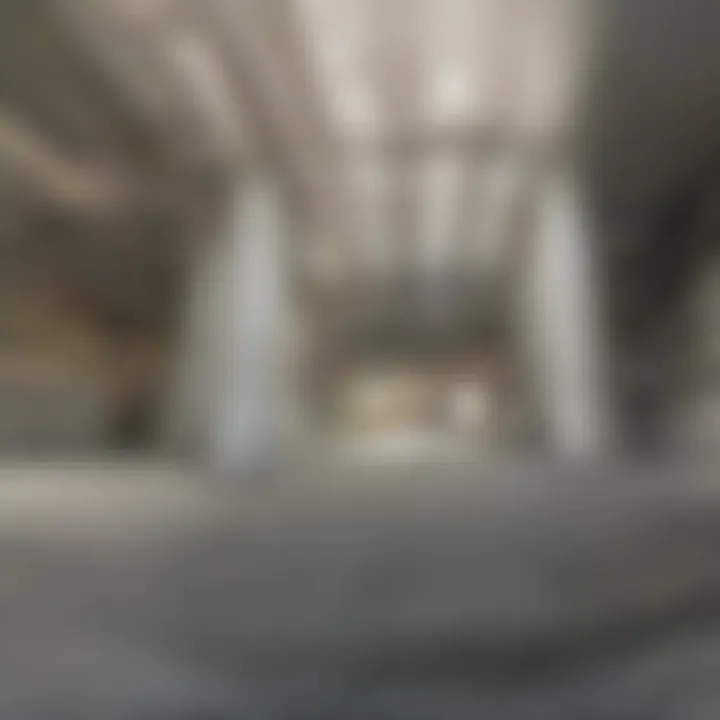
The FBI Building has significantly impacted the image of law enforcement in America. Its architecture conveys authority and capability, contributing to public trust in the agency. The design, characterized by utilitarian efficiency and restrained aesthetics, mirrors the FBI's approach to its mission. However, this image is complex.
While the building projects an image of security, it also represents the challenges faced by law enforcement. Issues such as surveillance, civil rights, and police conduct are crucial in how the public views the FBI. The building, therefore, becomes a point of contention, as it embodies the duality of protection and oversight.
Furthermore, as the FBI engages in various initiatives, the impact of the building continues to evolve. It is a space that has witnessed significant efforts to modernize the agency's image, from community engagement programs to transparency initiatives. As such, the FBI Building symbolizes not only law enforcement's authority but also its commitment to adapting to societal changes.
"The FBI Building stands as a reminder of the balance law enforcement must maintain between authority and public trust."
In summary, the FBI Building serves as both a literal and a metaphorical anchor for discussions around law enforcement in the United States. Its cultural and political significance cannot be understated, and its influence on the image of law enforcement continues to shape public dialogue in important ways.
Visitor Experience at the FBI Building
Visiting the FBI Building in Washington, D.C. provides a unique opportunity to engage with the architecture and history of one of America’s most recognizable institutions. The visitor experience is central to understanding the building's role, both as a functioning law enforcement facility and a cultural landmark. It enriches public perception of the FBI and promotes transparency regarding its operations and history. Through guided tours and educational initiatives, the building aims to connect the public with the agency's mission, legacy, and ongoing relevance.
Guided Tours and Educational Programs
The FBI offers guided tours that are both informative and engaging. These tours allow guests to explore various aspects of the building, its history, and the work of the FBI. They often include opportunities to see key areas such as the lobby and significant exhibits that highlight the agency's achievements as well as challenges. Such guided experiences encourage visitors to appreciate the nuances of the Bureau's role in American society.
While tours can be booked online, it’s advisable to check for availability. Visitors can also enjoy educational programs that offer deeper dives into themes such as criminal justice, crime prevention, and public safety. These programs serve to inform attendees not only about the FBI's functions but also about broader topics in law enforcement and community relationship-building.
Exhibits and Displays
The exhibits and displays within the FBI Building play a crucial role in providing context to the FBI's operations. Each exhibit educates visitors about the various aspects of federal law enforcement. Some displays showcase important artifacts from significant cases, including materials related to historic investigations and notable figures in FBI history.
"The FBI Building serves as a gateway to understanding the complexities of national security and law enforcement, blending history with real-time relevance."
A permanent exhibit, for example, examines the evolution of forensic science, highlighting technological advances and how they have transformed investigative practices. Visitors often find these displays striking, as they combine visual elements with extensive information that ignites interest in crime solving and legal processes.
Furthermore, rotating exhibits may address current issues such as cybersecurity, terrorism, and public safety, keeping the content fresh and relevant. This fluidity ensures that repeat visitors always find something new to engage with.
In summary, the visitor experience at the FBI Building is carefully curated to educate and inform. Through guided tours and a variety of engaging exhibits, visitors can gain insights into the FBI's mission and its impact on American society, further enhancing public understanding of this vital institution.
Controversies and Criticisms
The FBI Building stands as a monumental structure in Washington, D.C., but it is not without its share of controversies and criticisms. This section aims to explore the complexities surrounding public perception of the FBI, as well as the security issues that have arisen from its urban location. Understanding these aspects provides a fuller picture of the building's role in American society today.
Public Perception of the FBI
The public perception of the FBI is a multifaceted issue that reflects broader societal attitudes towards law enforcement, justice, and government authority. Historically, the FBI has oscillated between being viewed as a protector of citizens and as a symbol of government overreach. This duality is evident in how the agency's actions are scrutinized, especially in light of events that have raised ethical questions regarding surveillance and civil liberties.
Critics argue that the FBI sometimes prioritizes security over individual rights, which has led to skepticism. For instance, handling of high-profile cases such as those related to domestic terrorism or civil rights has often been criticized. The portrayal of the FBI in popular media also impacts public opinion, sometimes glamorizing their operations while glossing over controversies.
Moreover, the increasing emphasis on national security since the September 11 attacks has shifted the FBI's focus, which in turn affects public trust. Many citizens view the agency with caution, fearing its powers may infringe on their freedoms.
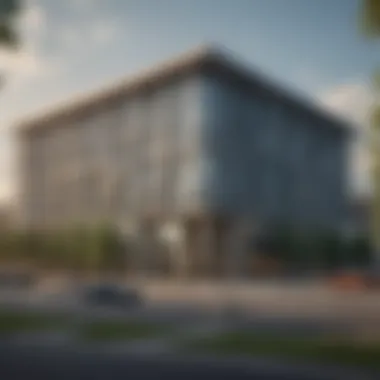
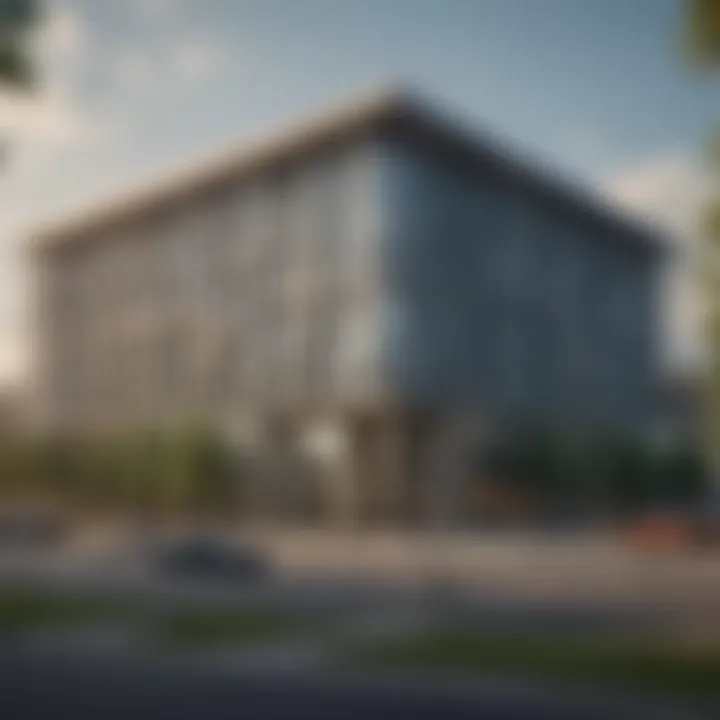
Security Issues and Urban Concerns
The FBI Building's urban location presents various security issues, both from a structural and a societal perspective. Urban environments bring unique challenges related to safety and accessibility. The building's prominence makes it a focal point for protests, which can lead to heightened security risks. For instance, during politically charged events, the FBI has had to increase security measures, disrupting local activities and raising tensions in the community.
Additionally, there are ongoing debates about how such a central location affects local neighborhoods. Critics have raised concerns about the building's security protocols, arguing that it may segregate surrounding areas or heighten the perception of danger in the vicinity. Neighborhood watch programs and increased police presence can create feelings of unease among residents.
However, some residents see the building as a necessary component of national security. They argue that the FBI's local presence can deter crime and enhance safety in the city. Yet, this balance remains delicate, with the community often torn between wanting security and desiring a harmonious living environment.
"The balance of security and civil liberties must always strive for equilibrium, especially in a diverse urban setting."
Future of the FBI Building
The future of the FBI Building is a topic of significant interest, particularly as it relates to urban planning and architecture. This iconic structure is not merely a government facility, but also a symbol of law enforcement in the United States. As the needs of society change, the adaptability of such a building becomes essential. Discussions surrounding the building often involve proposed renovations, alterations to its purpose, and long-term plans that take into account the evolving landscape of Washington, D.C.
This section will explore two main aspects: proposed renovations and changes, and the long-term plans for the site. Both elements are crucial for understanding how the FBI building will remain relevant in the years ahead and how it will continue to serve the needs of law enforcement and the public.
Proposed Renovations and Changes
The proposed renovations for the FBI Building aim at modernizing its infrastructure while respecting its historical significance. Recent proposals have included updates to the building's security systems, which are vital for the safety of both employees and visitors. Given the changing nature of threats, the building must adapt.
Moreover, enhancements such as energy-efficient systems are also on the table. Implementing solar panels or improving insulation can reduce the building's carbon footprint. Such changes align with broader environmental goals and demonstrate a commitment to sustainable practices.
In addition to structural updates, there are discussions regarding the beautification of the surrounding area. Landscape architecture could provide a more inviting environment, integrating green spaces that serve as public areas for gathering. This could make the FBI Building not just a workplace, but also a community landmark.
Long-Term Plans for the Site
Looking towards the future, the long-term plans for the FBI Building site are closely tied to urban development strategies for Washington, D.C. The city aims to balance historical preservation with modern needs, thereby enhancing the urban experience.
One potential consideration involves the relocation of the FBI headquarters to a suburban area to free up valuable land in downtown Washington. If this occurs, the site could be repurposed for mixed-use development. Such a transition would likely include residential, commercial, and public spaces that reflect the needs and desires of today’s citizens.
Additionally, the involvement of architects and urban planners in this process is critical. They must ensure that any changes made to the building and site maintain the historical integrity while fostering a sense of community.
The future of the FBI Building is not solely about preserving history but also about embracing change and innovation.
In summary, the FBI Building stands at a crossroads of history and modernity. Its future will depend on thoughtful renovations that respect its past while addressing contemporary needs. With the right strategies in place, the building can continue to serve as a vital part of Washington, D.C.'s urban landscape for generations to come.
The End
The conclusion of this article serves as a critical synthesis of the information presented about the FBI Building in Washington, D.C. This section encapsulates the building's architectural significance, historical context, and its role in law enforcement and American governance. By interweaving these themes, we gain insight into why this structure transcends its physical space, serving as a symbol of the FBI's presence and its implications for public perception.
Summary of Findings
Throughout the exploration of the FBI Building, several key points emerge. The architectural design reflects a blend of functionality and aesthetic considerations. The building, designed by the architect Charles F. Murphy, incorporates elements of the Brutalist style, which was both groundbreaking and controversial when constructed. Historically, the FBI Building has hosted pivotal events that have shaped law enforcement narratives in the United States.
The site has evolved from a mere operational facility to a public icon that represents the complexities of modern law enforcement. Its accessibility to visitors and engagement through educational programs provide a way for the public to confront and understand this institution. As we analyzed its cultural and political significance, it became clear that the FBI Building is not merely a backdrop for agency activities but a focal point of national discourse.
Final Thoughts on the Building's Legacy
The legacy of the FBI Building is multifaceted. It embodies the aspirations and challenges of American law enforcement since its inception. As society continues to grapple with issues of security, privacy, and public trust, the building stands as a witness to the evolution of these dialogues.
The future proposed renovations reflect the necessity for change in response to contemporary needs. They are intended to uphold the building's historical integrity while ensuring it adapts to modern demands. This ongoing dialogue between past and future emphasizes the relevance of the FBI Building in a changing world. As it stands, the building remains an architectural and cultural landmark, encapsulating the story of an evolving nation.







